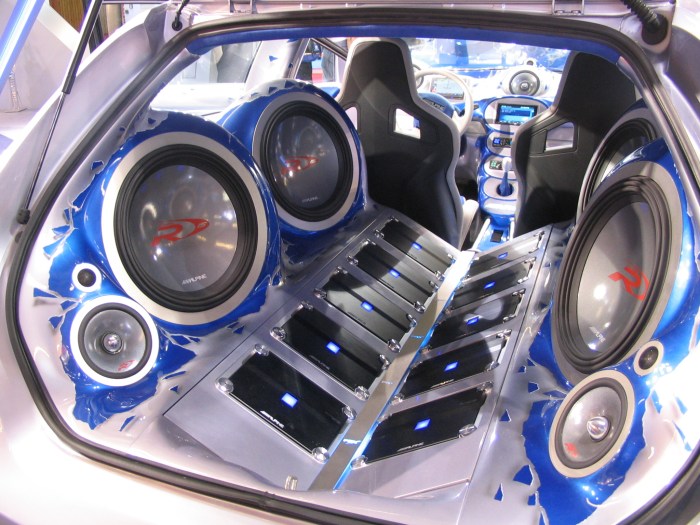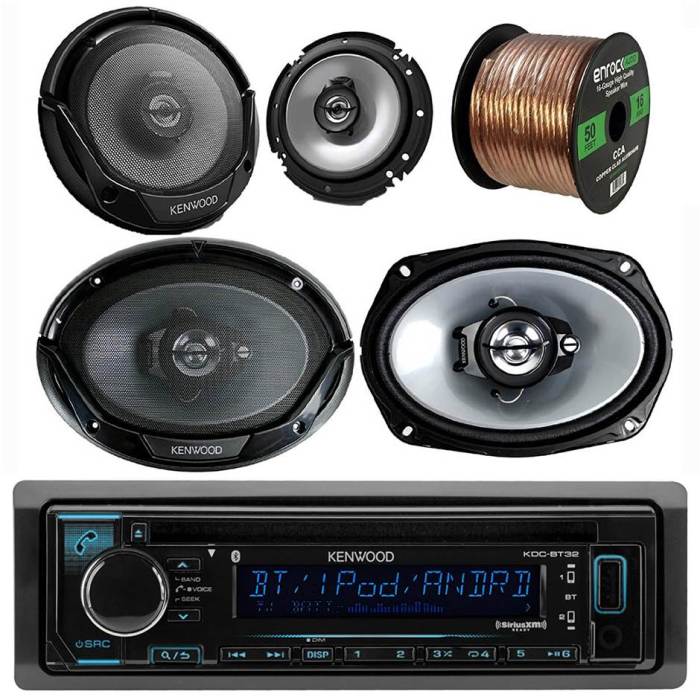When it comes to car audio systems, get ready to elevate your driving experience to a whole new level with the perfect mix of style and functionality. From the basics to choosing the right system, this guide has got you covered.
Basics of Car Audio Systems
When it comes to car audio systems, there are several key components that work together to provide an optimal listening experience while you’re on the road.
Head Unit
The head unit, also known as the stereo or receiver, is the central control for the entire audio system. It typically includes features like radio, CD player, USB input, and sometimes even Bluetooth connectivity. The head unit is responsible for sending audio signals to the speakers through the amplifier.
Speakers
Speakers are essential for producing sound in your car. They come in different sizes and shapes, each serving a specific purpose in delivering high-quality audio. Components like tweeters handle high-frequency sounds, while subwoofers are designed for low-frequency bass. Proper placement of speakers is crucial for achieving balanced sound throughout the vehicle.
Amplifier
The amplifier boosts the audio signal coming from the head unit before sending it to the speakers. It ensures that the sound is powerful and clear, especially at higher volumes. An amplifier is necessary for enhancing the overall audio experience in your car.
Installation Importance
Proper installation of car audio components is crucial for achieving optimal performance. Incorrect installation can lead to distorted sound, electrical issues, or even damage to the components. It’s essential to follow the manufacturer’s guidelines or seek professional help to ensure that each part is installed correctly.
Types of Car Audio Systems

When it comes to car audio systems, there are two main types to consider – factory-installed and aftermarket systems. Let’s dive into the key differences between the two and explore the benefits of upgrading to a premium audio system.
Factory-Installed vs. Aftermarket Audio Systems
- Factory-Installed Audio Systems:
- These systems come pre-installed by the car manufacturer.
- They are usually more basic in terms of sound quality and features.
- Upgrading factory-installed systems can be limited due to compatibility issues.
- Aftermarket Audio Systems:
- Aftermarket systems are installed after purchasing the vehicle.
- They offer a wider range of customization options, including better sound quality and advanced features.
- Aftermarket systems can enhance the overall audio experience in the car.
Single-DIN vs. Double-DIN Head Units
- Single-DIN Head Units:
- Single-DIN units are smaller and typically have a standard height of 2 inches.
- They are more common in older vehicles and offer basic audio functionality.
- Double-DIN Head Units:
- Double-DIN units are larger and have a height of 4 inches.
- They provide more space for features like touchscreen displays and advanced controls.
- Double-DIN units are popular in modern vehicles for their enhanced audio capabilities.
Benefits of Upgrading to a Premium Audio System
- Enhanced Sound Quality:
- Upgrading to a premium audio system can significantly improve the sound quality in your car.
- Higher-quality speakers and amplifiers can deliver a more immersive listening experience.
- Advanced Features:
- Premium audio systems often come with advanced features like Bluetooth connectivity, smartphone integration, and customizable EQ settings.
- These features can enhance convenience and personalization in your car audio setup.
- Increased Resale Value:
- Installing a premium audio system can add value to your vehicle when it comes time to sell or trade-in.
- Buyers may be willing to pay more for a car with a high-quality audio setup.
Choosing the Right Audio System

When it comes to choosing the right audio system for your car, there are several factors to consider to ensure you get the best sound quality and performance. From selecting speakers to amplifiers and ensuring compatibility between components, each decision plays a crucial role in enhancing your overall audio experience.
Factors to Consider When Selecting Speakers
When choosing speakers for your car audio system, consider the following factors:
- Speaker Size: Ensure the speakers fit correctly in your car without any modifications.
- Power Handling: Match the speaker’s power handling capabilities with your amplifier to prevent distortion and damage.
- Sound Quality: Listen to different speakers to determine which ones produce the best sound for your preferences.
- Speaker Type: Decide between component speakers for customizable sound or full-range speakers for simplicity.
Impact of Amplifier Power on Audio Quality
Amplifier power has a significant impact on the audio quality produced by your car audio system. Here are some key points to consider:
- Power Output: Higher amplifier power results in louder and clearer sound, but be cautious not to overpower your speakers.
- Distortion: Insufficient amplifier power can lead to distortion, affecting the overall sound quality of your audio system.
- Speaker Compatibility: Ensure your amplifier’s power output matches the power handling capabilities of your speakers for optimal performance.
Importance of Compatibility Between Components
Compatibility between components is crucial for a seamless and high-quality audio experience in your car. Consider the following when ensuring compatibility:
- Impedance Matching: Match the impedance of your speakers and amplifier for efficient power transfer and sound quality.
- Crossover Integration: Ensure the crossover points of your speakers and amplifier match to prevent frequency interference and distortion.
- Wiring Configuration: Use appropriate wiring configurations to connect your components efficiently and avoid signal loss or noise.
Installation and Setup
When it comes to installing a car audio system, there are several key steps that need to be followed to ensure optimal sound quality and performance. It’s important to carefully plan out the installation process and take your time to do it right.
Optimizing Speaker Placement
Proper speaker placement is crucial for achieving the best sound quality in your car audio system. Here are some tips to help you optimize speaker placement:
- Position the tweeters at ear level for better clarity and imaging.
- Ensure that the speakers are securely mounted to prevent vibrations and distortion.
- Avoid placing speakers too close to reflective surfaces that can cause sound waves to bounce around.
- Consider the acoustics of your car interior and adjust speaker placement accordingly.
Tuning an Audio System, Car audio systems
Properly tuning your car audio system is essential for achieving balanced sound and getting the most out of your equipment. Here’s how you can tune your audio system effectively:
- Start by adjusting the equalizer settings to fine-tune the frequency response of your speakers.
- Balance the sound levels of each speaker to ensure a cohesive and immersive listening experience.
- Experiment with different crossover settings to optimize the distribution of frequencies between speakers.
- Use a sound meter to measure and adjust the volume levels for each speaker to achieve a balanced soundstage.

